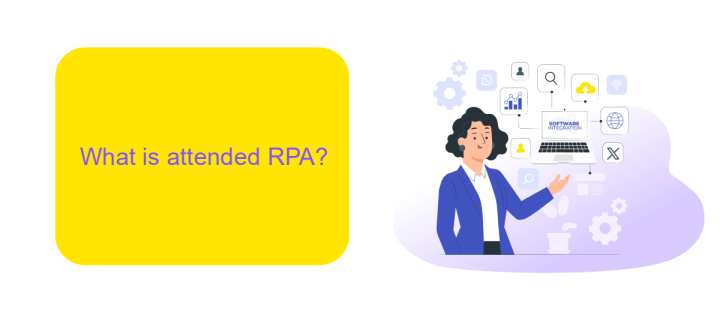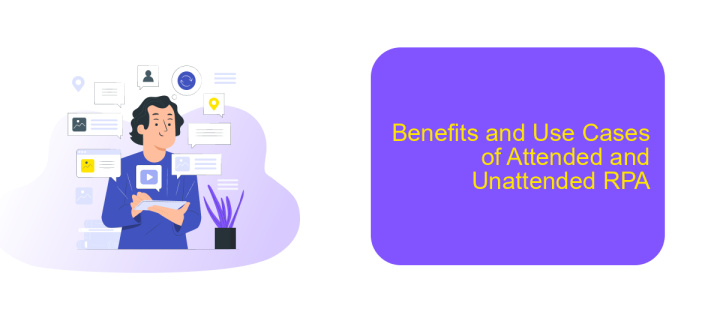Attended Vs Unattended RPA UiPath
In the realm of Robotic Process Automation (RPA), understanding the differences between attended and unattended automation is crucial for optimizing workflows. UiPath, a leader in RPA solutions, offers distinct functionalities for both attended and unattended bots. This article delves into their unique features, use cases, and benefits, helping organizations make informed decisions on which type best suits their operational needs.
Attended vs Unattended RPA
Attended and Unattended RPA are two distinct approaches within the realm of Robotic Process Automation (RPA) in UiPath. Attended RPA involves bots that work alongside human employees, assisting them with tasks and requiring human intervention at various stages. In contrast, Unattended RPA operates independently, executing tasks without human involvement, often scheduled or triggered by specific events.
- Attended RPA: Requires human interaction, ideal for customer service and support tasks.
- Unattended RPA: Operates autonomously, suitable for back-office processes like data entry and processing.
- Flexibility: Attended RPA is flexible but less scalable, while Unattended RPA offers high scalability and efficiency.
- Integration: Tools like ApiX-Drive can facilitate seamless integration between various systems, enhancing both Attended and Unattended RPA workflows.
Choosing between Attended and Unattended RPA depends on the specific needs of the organization. Attended RPA is beneficial for tasks that require frequent human interaction, while Unattended RPA excels in automating repetitive, high-volume tasks. By leveraging integration services like ApiX-Drive, businesses can optimize their RPA strategies for maximum efficiency and productivity.
What is attended RPA?

Attended Robotic Process Automation (RPA) refers to software robots that work alongside human employees to assist with various tasks in real-time. These bots are triggered by user actions and are designed to handle repetitive, mundane activities, thereby allowing employees to focus on more strategic and value-added tasks. Attended RPA is particularly useful in customer service, where agents can use bots to quickly access information or automate parts of the interaction, enhancing both efficiency and customer experience.
One of the key advantages of attended RPA is its ability to seamlessly integrate with other systems and applications. For instance, services like ApiX-Drive can facilitate these integrations by connecting different software platforms, making it easier to automate workflows without extensive coding. This ensures that the bots can interact with various data sources and applications, providing a more cohesive and streamlined operational environment. Overall, attended RPA not only boosts productivity but also improves accuracy and compliance in processes.
What is unattended RPA?

Unattended RPA (Robotic Process Automation) refers to software robots that operate without human intervention. These bots are designed to handle tasks autonomously, running in the background while employees focus on more strategic activities. They are particularly effective for repetitive, rule-based tasks that do not require human judgment.
- Automate data entry and extraction from various sources.
- Perform batch processing of transactions and data.
- Integrate seamlessly with existing systems and applications.
Unattended RPA can be scheduled to run at specific times, triggered by predefined events, or initiated remotely. Services like ApiX-Drive facilitate the integration of RPA with multiple platforms, ensuring smooth data flow and operational efficiency. By leveraging unattended RPA, organizations can significantly reduce operational costs, minimize errors, and improve overall productivity.
Benefits and Use Cases of Attended and Unattended RPA

Attended RPA (Robotic Process Automation) offers numerous benefits, particularly in scenarios where human intervention is essential. It excels in tasks that require real-time decision-making and customer interaction, enhancing productivity and reducing human error. For instance, attended RPA can assist customer service representatives by automating data retrieval and form filling, enabling them to focus on customer engagement.
On the other hand, Unattended RPA operates independently without human intervention, making it ideal for back-office operations. It can run 24/7, handling high-volume, repetitive tasks with precision and speed. This leads to significant cost savings and operational efficiency. Examples include data migration, invoice processing, and report generation.
- Attended RPA: Real-time decision-making, customer service enhancement, data retrieval automation.
- Unattended RPA: 24/7 operation, high-volume task automation, cost savings, and efficiency.
Integrating RPA solutions with other systems can further enhance their capabilities. Services like ApiX-Drive facilitate seamless integration, allowing businesses to connect their RPA tools with various applications effortlessly. This ensures a more streamlined workflow and maximizes the benefits of both attended and unattended RPA.
Choosing Between Attended and Unattended RPA
Choosing between Attended and Unattended RPA depends on the specific needs and goals of your organization. Attended RPA is ideal for tasks that require human intervention, such as customer service operations where agents need to interact with the system in real-time. This type of automation works alongside employees, enhancing their productivity by handling repetitive tasks and allowing them to focus on more complex activities. On the other hand, Unattended RPA operates independently, suitable for processes that can be fully automated without human involvement, such as data entry, invoice processing, or batch operations.
When deciding which type of RPA to implement, consider the nature of the tasks, the required level of human interaction, and the scalability of the solution. Additionally, integrating RPA with other systems can streamline operations further. For instance, services like ApiX-Drive facilitate seamless integration between various software applications, ensuring that your RPA solutions work harmoniously within your existing infrastructure. This can significantly enhance the efficiency and effectiveness of both attended and unattended RPA implementations.
FAQ
What is the main difference between Attended and Unattended RPA in UiPath?
When should I use Attended RPA?
When is Unattended RPA more suitable?
Can Attended and Unattended RPA be used together?
How can I integrate RPA with other systems and workflows?
Time is the most valuable resource for business today. Almost half of it is wasted on routine tasks. Your employees are constantly forced to perform monotonous tasks that are difficult to classify as important and specialized. You can leave everything as it is by hiring additional employees, or you can automate most of the business processes using the ApiX-Drive online connector to get rid of unnecessary time and money expenses once and for all. The choice is yours!

